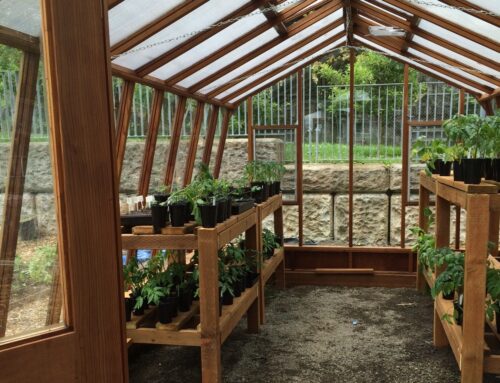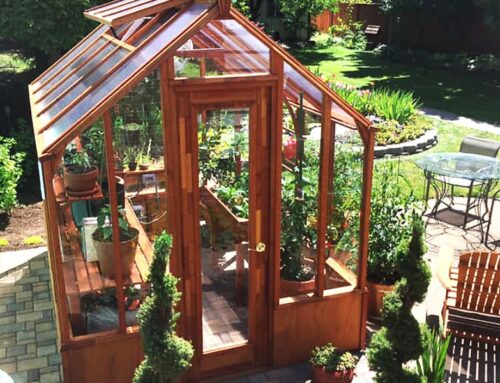Greenhouse gardening offers a dream-like experience for green thumb enthusiasts, with year-round cultivation shielded from harsh weather. However, this slice of cultivation heaven doesn’t come without its challenges. One thing every horticulturist needs is a list of the top fourteen greenhouse mistakes to avoid for a thriving greenhouse garden. Learn how to navigate these pitfalls for a fruitful gardening experience.
Poor Soil Management
Nutrient-rich soil is essential for your plants to keep their health and vitality. Regularly testing and changing your soil ensures it provides your plants with principal elements and nutrients. Take your time when assessing and enhancing the quality of your soil so the foundation you lay is successful year-round. Don’t underestimate the importance of nurturing your soil—it’s the key to growing healthy and vibrant plants!
Neglecting Plant Nutrition
Plants need nutrient-rich soil to thrive and reach their full potential. Besides regularly watering your plants, provide them with essential nutrients by changing them when needed, such as every season. Nutrients like nitrogen, phosphorus, and potassium support a plant’s growth by strengthening the roots and making each bloom vibrant towards the end of its development.
Underwatering
Plants may dry out faster in greenhouses than in other environments due to the increased heat. You should check the plant’s moisture levels often to ensure they’re receiving enough water to keep them hydrated. Maintaining water levels ensures your greenhouse plants can thrive in their environment.
Overcrowding
Plants need ample room to grow and spread their roots. Overcrowding your plants limits their access to sunlight, water, and nutrients and restricts their airflow. Lacking airflow creates an environment vulnerable to disease, as moisture and humidity can get trapped among the tightly packed foliage. Ensure you always leave enough space between your plants to promote their health and vitality, allowing them to thrive and flourish.
Poor Ventilation
Proper air circulation is crucial to prevent disease and promote plant growth in your greenhouse. By ensuring you properly ventilate your conservatory or greenhouse, you can create an environment that allows fresh air exchange, reduces humidity levels, and regulates temperatures. Improving ventilation makes the plants feel better by minimizing pest and disease risks, so your garden thrives. You can improve air circulation by adding roof vents, circulation or exhaust fans, or louvered windows.
Overheating
Gardeners often overlook the ventilation and shade of their greenhouses, resulting in an overheated space. Prioritizing ventilation and shade is essential to keep the greenhouse at an ideal temperature. In the summer, the standard greenhouse temperature is 75 to 85 degrees Fahrenheit during the day. At night, it’s 60 to 76 degrees Fahrenheit. In the winter, the greenhouse’s daytime temperature range should be between 65 and 70 degrees Fahrenheit and 45 degrees Fahrenheit in the evening. Preventing overheating is crucial for maintaining healthy growing conditions, so the plants can fully develop.
Ignoring Humidity Levels
High humidity levels create a problem for your greenhouse’s ecosystem; leading to mold growth and increasing the risk of diseases. Regularly checking humidity levels in your space ensures your plants’ environment stays healthy. You could try sterilizing your greenhouse or investing in a dehumidifier to regulate the humidity so mold and harmful microorganisms don’t grow uncontrollably. Adding an exhaust fan to help remove excess humidity may be worth considering if you live in a humid climate. Use a hygrometer to measure moisture levels in your greenhouse and adjust the fans and vents as needed.
Failure to Sterilize
Ensuring your greenhouse is sterile and clean helps stop the spread of diseases. You should do more than regularly clean the pots and tools; clean the structure itself. Remove debris, dirt, and potential pathogens to reduce the risk of plant diseases. Remember, a little extra effort can go a long way in promoting the overall well-being of your greenhouse’s ecosystem.
Neglecting Pest Control
Although greenhouses are helpful for plant growth, they are a paradise for pests. These tiny intruders cause damage to the greenhouse that puts your plant’s growth and health at risk. Regularly inspecting your plants for any signs of pest damage, such as discoloration, wilting, or chewed leaves is crucial to ensure their well-being. By implementing a comprehensive pest management strategy, you can protect your greenhouse oasis and keep the flourishing environment your plants deserve.
Inadequate Light
Greenhouses can bring in natural light, but not all greenhouses are the same. Some greenhouses allow for better light levels than others. Sometimes, the greenhouse might allow for the proper amount of sunlight your plants need, but it’s not facing the right direction. Consider getting a greenhouse with a fully transparent glass roof if your location has ample trees for shade, or if you live in a location that does not receive many days of sunlight. Also, consider using polycarbonate in the roof to diffuse and filter intense sunlight if you live in a hot location with full sun year-round. Ensure the structure faces the correct direction. It might be worth installing grow lights if your greenhouse doesn’t receive at least six hours of sunlight daily. These artificial lights supply the right light spectrum and intensity for your plants, ensuring they receive the necessary energy for photosynthesis. Adding grow lights to your greenhouse can help plants thrive and develop well.
Ignoring Seasonal Changes
A greenhouse’s needs change throughout the year, so your to-do list might grow along with the season. Before buying a greenhouse, a crucial step is ensuring you’re ready to supply the best care for your plants. Adjusting your care routine as necessary ensures your greenhouse thrives year-round so you can tend to your beautiful garden without worrying if they’re withering.
Improper Plant Timing
Timing is crucial in greenhouse gardening as it ensures the best growth and productivity. Carefully follow the recommended planting schedule for each plant variety to achieve the best results. Following a set plant timing schedule ensures your plants receive the right conditions at the right time, allowing them to bloom in your greenhouse. So, take the time to plan and execute your planting activities precisely, and your reward will be a bountiful and flourishing garden.
Not Planning For Growth
Plants grow and evolve, constantly reaching new heights. That’s why ensuring your greenhouse supplies ample space and resources to accommodate their future growth is crucial. Proactively planning for your plants’ potential development lays the foundation for a thriving and bountiful greenhouse environment. Remember, with careful consideration and foresight, you can create a nurturing space where your plants thrive and bloom without struggle.
Ignoring Plant Compatibility
Understanding that not all plants coexist harmoniously is important when planning your greenhouse. Before planting, research which plants can grow side-by-side to ensure a successful and thriving greenhouse environment.
Avoid these common mistakes for successful greenhouse gardening. Take preemptive measures and practice regular maintenance to create a thriving space for year-round plant growth. Follow your dreams of growing beautiful, thriving gardens by upgrading your space with Sturdi-Built’s heavy-duty greenhouse kits. Each kit uses materials from the great Redwood forests, and awaits you to assemble them so you can start your journey towards a bountiful garden today!











Leave A Comment